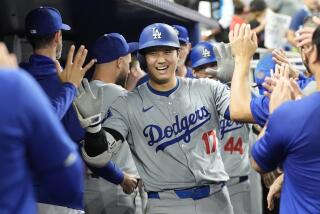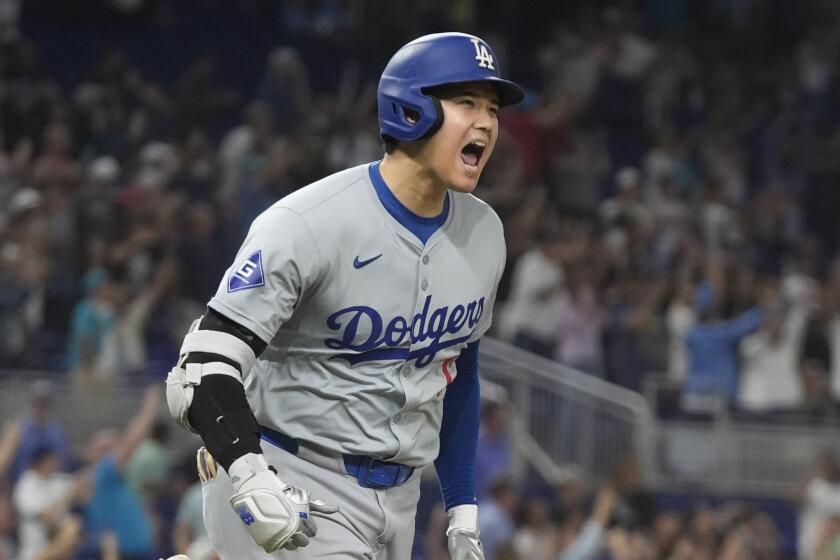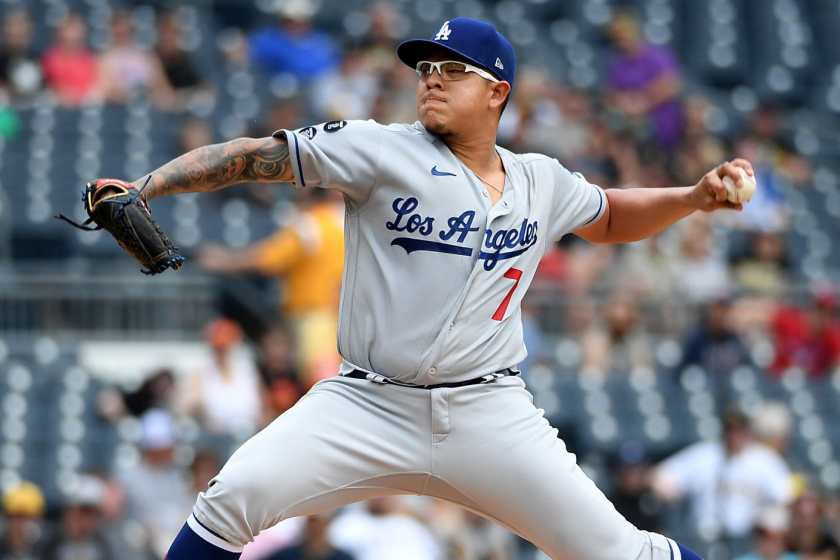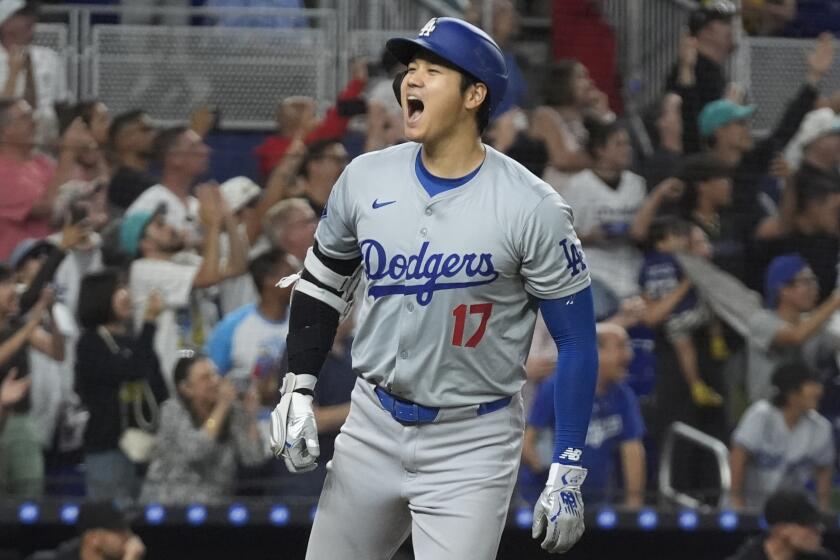Irabu Finally Joins the Arms Race
Amid a playoff atmosphere and an international media onslaught in the Bronx, Hideki Irabu gets the second half of the 1997 season off to a rousing and appropriate start tonight when he faces the Detroit Tigers in his New York Yankee debut.
Appropriate?
If the Nolan Ryan of Japan comes even close to that in the United States, he should help fuel a
first-half trend that produced a reduction in power and a resurgence in pitching.
Buoyed by the continued maturation of a fleet of young pitchers, the beleaguered mound corps generated a significant statistical improvement that was underscored by the meager offensive output in the All-Star game.
A three-month aberration or the real thing?
“Well,” said an American League general manager, “at least we’re not picking up the paper every day and reading how the ball is suddenly juiced or wound more tightly.”
Perhaps, but pitching remains in widespread demand as the second half opens with the trading deadline only three weeks away and the widely coveted Irabu expected to draw more than 40,000 to Yankee Stadium tonight.
“It’s going to be a madhouse, a carnival,” Yankee Manager Joe Torre said. “I know he’s going to be anxious, but I just hope he can settle into the rhythm of the game and throw strikes.
“We know he has the ability to do it, but it may be difficult given everything surrounding his first appearance.”
Irabu won’t be alone in his anxiety. All of his Yankee teammates want to see what the commotion has been all about, to see if the $12.8-million contract that created so much clubhouse consternation was justified.
“He’s already been made into something of a legend,” pitcher David Cone said. “There’s already a mystique about him. It’s like George Plimpton created this Sydd Finch character who throws 99 (mph) with a 90-mph [split-finger]. We all want to see what he’s about.”
It took six months of on-and-off talks for the Yankees to get Irabu where he wanted to be. They sent two prospects--outfielder Ruben Rivera and pitcher Rafael Medina--and $3 million to the San Diego Padres for negotiating rights.
Are some Yankees still upset by that $12.8 million George Steinbrenner gave a pitcher who had yet to deliver a pitch in the big leagues?
“I think that’s died down,” Cone said. “Now everybody just wants to know if he can help the team. I’m going to welcome him and tell him I admire the way he stood up for his rights [in Japan] and his determination to become a Yankee.”
Irabu prepared with six minor league starts. He was 3-1 with a 2.32 earned-run average, striking out 34 and walking only one in 31 innings. He also displayed delivery problems reminiscent of Hideo Nomo’s first year. He was charged with seven balks, and runners tended to steal at will, taking advantage of a big motion that resembles slow motion.
“There are things we’ve already begun to work on,” Torre said, adding that communication may be limited, although Irabu “seems to speak pretty good baseball English.”
Distractions, of course, are nothing new in the Bronx.
The club provided Irabu with an interpreter, and he is accompanied by his personal trainer and acupuncturist. He joins a rotation of Andy Pettitte, David Wells, Dwight Gooden and Cone. The Yankees are armed and dangerous, seven games behind the Baltimore Orioles in the American League East, but confident they can erase that deficit.
The Orioles, however, have three pitchers on their way to 20 wins, which characterizes the first-half trend.
Consider:
* Twenty-two of the 28 teams reached the All-Star break with lower earned-run averages than they had at the end of 1996. The Tigers, dropping from 6.28 to 4.46, may produce the biggest reduction in history.
* Nineteen pitchers have ERAs under 3.00 compared to six last year.
* There are 14 pitchers with 10 or more wins, including six with 12 or more. There were three 20 game-winners last year--John Smoltz, Pat Hentgen and Pettitte--after there were none in 1994 and ’95.
* The overall major league ERA has fallen from 4.64 to 4.38; runs per game have gone from 10.07 to 9.55, and home runs per game have fallen slightly, from 2.18 to 1.99.
Said Cone: “There are some front-line guys who are healthy again--like myself, Randy Johnson, Jimmy Key and Roger Clemens--and there are quite a few young pitchers who have come into their own. There are a lot of variables, but that’s part of it.”
Among the young pitchers--none over 28--who have begun to make a mark or are continuing to: Justin Thompson, Jason Dickson, Shawn Estes, Jose Rosado, Pedro Martinez, Francisco Cordova, Matt Morris, Bobby Jones, Alan Benes, Denny Neagle, Kevin Foster and Darryl Kile.
Sixteen players hit 40 or more homers last year, but only 11 reached the break with 20 or more. Improved pitching isn’t the only reason Brady Anderson has seven after hitting 50 last season, or that Gary Sheffield has nine after hitting 42 or that Ken Caminiti has six after hitting 40 or that Albert Belle and Frank Thomas have combined for 34 after hitting 88, but it’s definitely a factor.
“The fact of the matter is that pitching was so bad the last few years it could only get better,” Texas Ranger Manager Johnny Oates said.
Toronto General Manager Gord Ash agreed, and added: “I think the teams at the top and in the middle are pretty much the same, but I think the bottom teams have improved their pitching, and that’s produced better numbers.”
With all of that, no one expects a rash of pitching trades before the non-waiver deadline July 31.
Depth is still a problem, and the addition of two teams next year will create further dilution. As the Nolan Ryan of Japan prepares for the Bronx, the global search continues.
More to Read
Go beyond the scoreboard
Get the latest on L.A.'s teams in the daily Sports Report newsletter.
You may occasionally receive promotional content from the Los Angeles Times.










